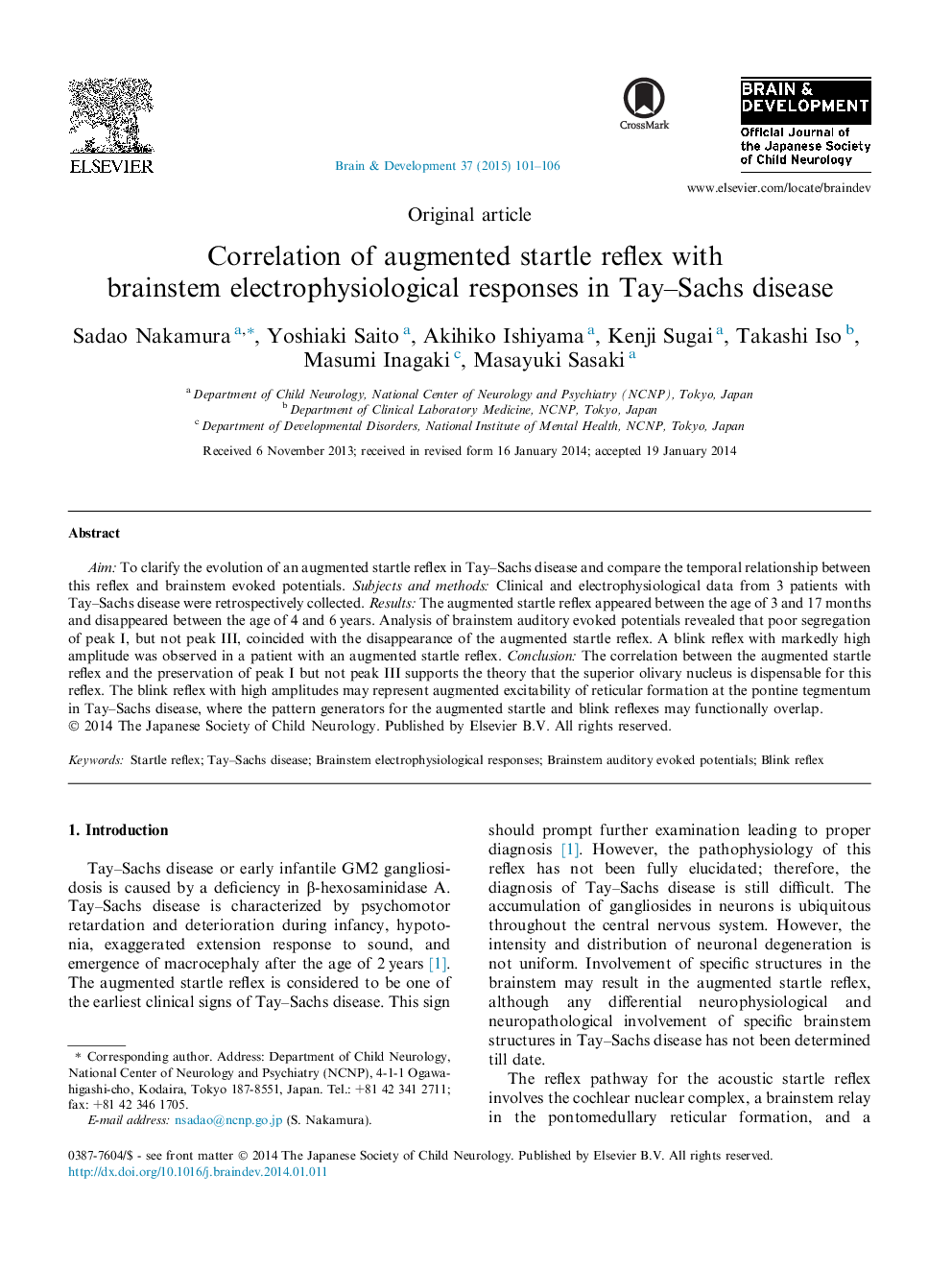| Article ID | Journal | Published Year | Pages | File Type |
|---|---|---|---|---|
| 3036688 | Brain and Development | 2015 | 6 Pages |
Aim: To clarify the evolution of an augmented startle reflex in Tay–Sachs disease and compare the temporal relationship between this reflex and brainstem evoked potentials. Subjects and methods: Clinical and electrophysiological data from 3 patients with Tay–Sachs disease were retrospectively collected. Results: The augmented startle reflex appeared between the age of 3 and 17 months and disappeared between the age of 4 and 6 years. Analysis of brainstem auditory evoked potentials revealed that poor segregation of peak I, but not peak III, coincided with the disappearance of the augmented startle reflex. A blink reflex with markedly high amplitude was observed in a patient with an augmented startle reflex. Conclusion: The correlation between the augmented startle reflex and the preservation of peak I but not peak III supports the theory that the superior olivary nucleus is dispensable for this reflex. The blink reflex with high amplitudes may represent augmented excitability of reticular formation at the pontine tegmentum in Tay–Sachs disease, where the pattern generators for the augmented startle and blink reflexes may functionally overlap.
